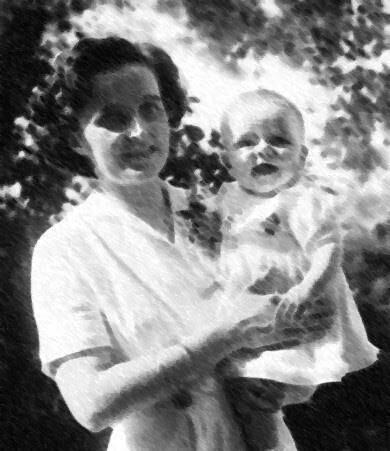Ever since the Second Vatican Council spoke of the “universal call to holiness,” there has been a move to recognize more lay men and women as saints, as models of sanctity for lay Catholics. Several contemporary saints have already been raised to the “glories of the altar,” among them St. Gianna Molla (1922-1962), an Italian mother (pictured here) who carried a child to term rather than consenting to an abortion, and who died in the process. Others on their way include Blessed Pier Giorgio Frassati (1901-1925), the charismatic Italian social activist who once said, “Charity is not enough; we need social reform.” In that same vein is the redoubtable Dorothy Day, the American-born co-founder of the Catholic Worker movement, whose cause for canonization has just been advanced. And in 2008, Louis and Zélie Martin, the devoutly Catholic parents of St. Thérèse of Lisieux (and her equally pious sisters) were beatified in 2008, the rare instance of a husband and wife recognized together.
But when it comes to recognizing saints, the church still tends to favor popes, bishops, priests and members of religious orders. Last month, Pope Benedict XVI released the latest list of 27 candidates for sainthood, which consisted of: martyrs in the Spanish Civil War, including a bishop and 13 Daughters of Charity; an Austrian priest killed in Buchenwald; the Mexican foundress of a women’s religious order; an 18th-century Italian diocesan priest and a Dominican priest who founded the Bethany community. While there are plenty of holy Fathers and Mothers on that list, where are the holy mothers and fathers?
Fifty years after Vatican II, in the midst of the church’s continued invitation for lay people to lead holy lives, why are there still relatively few role models for the laity?
Many lay people have told me, over the years, that they long for more saints who lived lives extraordinary holiness in ordinary situations. That is, a layperson other than a saint from the very earliest days of the church (St. Joseph); someone who wasn’t royalty (like St. Elizabeth of Hungary); someone who didn’t end up in a religious order at the end of his or her life (like St. Bridget of Sweden); someone who didn’t initially plan to live as “brother and sister” while married (like Louis and Zélie Martin); someone who didn’t found a religious order or social movement (like Dorothy Day); and someone who didn’t die in terrible circumstances (like St. Gianna Molla).
While Catholics recognize that the canonized saint needs to have lived a life of “heroic sanctity,” many long for more saints they can hope to emulate in their daily lives. Which raises an important question: Who is holier--Mother Teresa or the elderly mother who cares for decades for an adult child who is autistic? Pope John Paul II or the pious educator who serves as a director of religious education in an inner-city parish, while holding down another job to support his family? The answer: they’re both saintly, in their own ways. As Blessed John XXIII said about St. Aloysius Gonzaga, the 16th-century Jesuit, “If Aloysius had been as I am, he would have become holy in a different way.” (And not to put too fine a point on it, but that’s still a pope talking about a member of a religious order.)
“Heroic sanctity” comes in many forms—and it includes both those whose faith inspires them to found a religious order, and those whose faith enables them to care for a sick child for years on end.
Currently there are three reasons that frustrate the desire for more lay saints of any stripe. The first is the persistent belief, still ingrained in many Catholics, that ordination or taking religious vows represents a higher level of holiness than does, say, raising a child. As a young boy in Sunday school class I was once given a picture to color. It featured a priest and sister on one side of the page, and a husband and wife on the other. Under the husband and wife the legend read: “Good.” Under the priest and sister: “Better.” But even the saints disagreed with this. “Holiness is not the luxury of a few,” said Mother Teresa. “It is a simple duty for you and for me.”
The second factor is the more "public" nature of the lives of many of the priests and members of religious orders who are canonized. It’s easier to see the “results” of the religious order founder or foundress; much harder is it to know about the elderly mother’s care for the autistic child: such accomplishments rarely make news. So the church’s requirement that a local “devotion” spring up around the person will naturally be thwarted. This kind of “hidden” lay holiness will be less likely to attract the devout simply because it is less well known.
The third reason is the arduous, time-consuming and expensive canonization procedures, which only religious orders and dioceses can afford (or understand). Certainly it makes sense to have standards--and high ones--for someone to be canonized, and a thorough vetting process is required. But not many children of holy parents are able to navigate the complex process required by the Congregation of the Causes of the Saints (if they even know it). Once the mother of the autistic boy dies, who is there to advance her “cause”? God alone knows of her holiness, yet her example might speak to many more Catholics than even that of a pope.
If the church hopes to offer relevant models of holiness for lay people, it’s time to make the canonization process far more accessible, and far less expensive, for those who knew a holy husband, wife, mother, father, friend or neighbor. Santi subiti!








